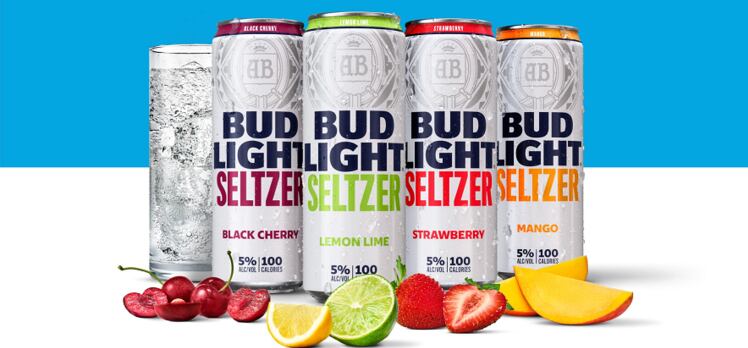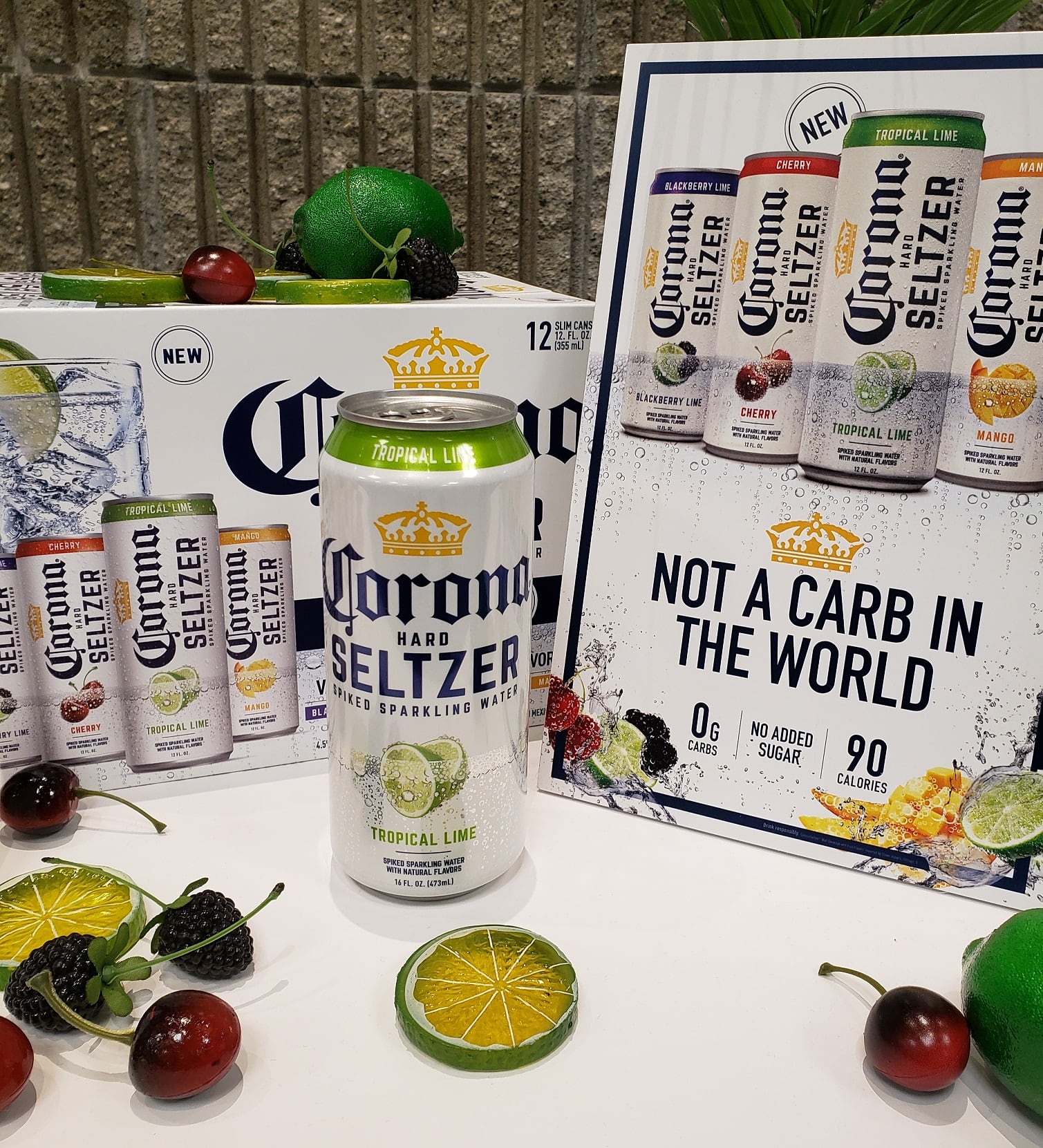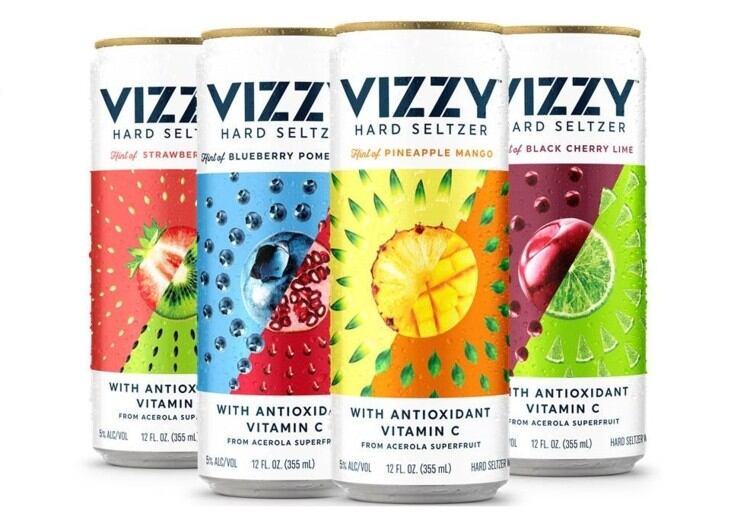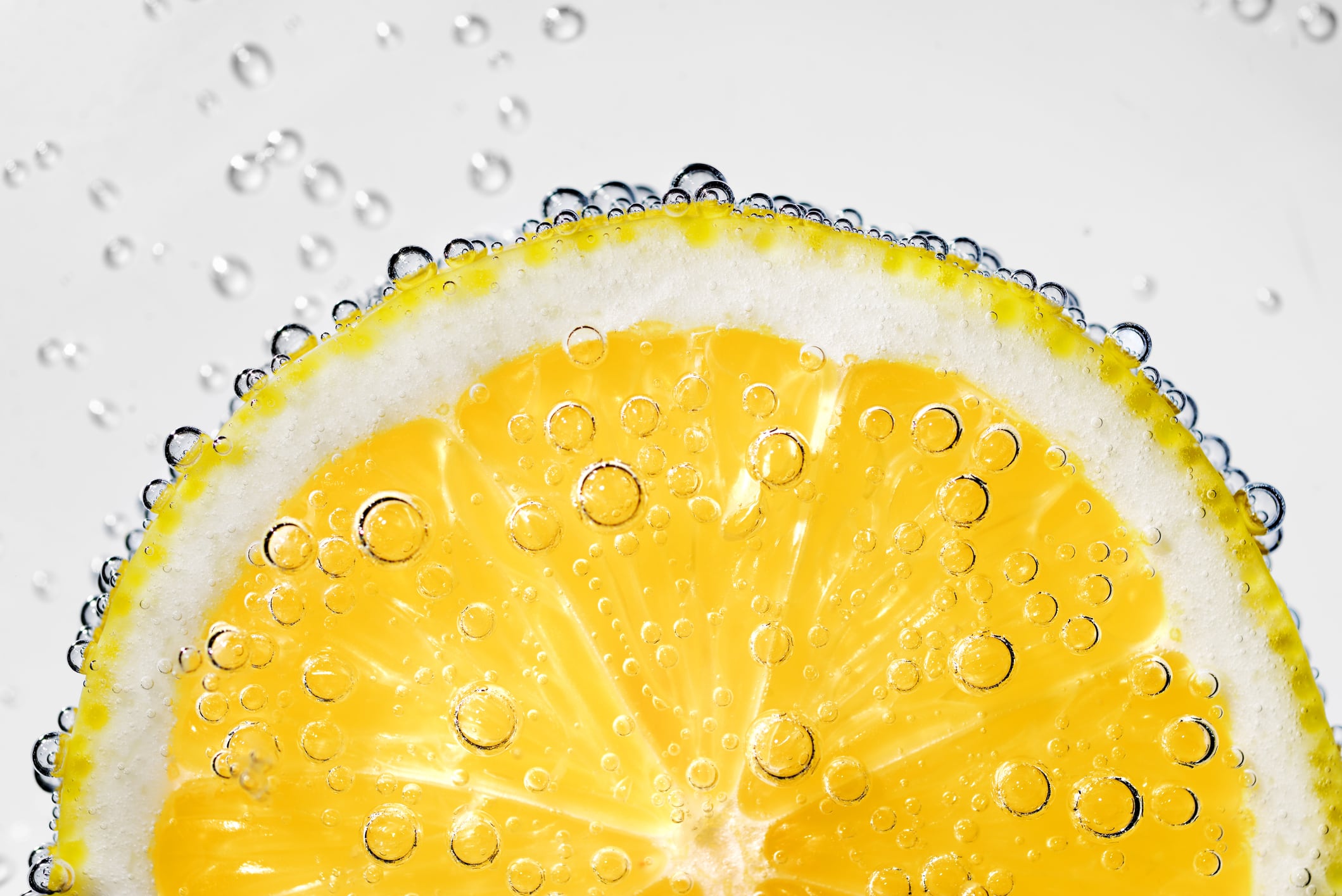Hard seltzers rose spectacularly to fame in 2019 on the wave of a few pioneering brands. With the category now well established, Big Beer is assured of its potential and is smashing into seltzer in with sparkling launches and super budgets in the US.
Big Beer's execs believe their companies are perfectly positioned to play in the category - dubbing hard seltzer ‘a game of big brands’. But how exactly will we see them shape the seltzer phenomenon in 2020?
Big beer, super seltzer?
To be clear, Big Beer is not a completely new entrant into the seltzer category – AB InBev, for example, acquired SpikedSeltzer back in 2016 (the brand was an early entrant into the hard seltzer category in 2013, and has since been rebranded as Bon & Viv).
But what is notable this year is the sudden influx of hard seltzer launches from Big Beer. Ab InBev launched Natty Light Seltzer in August; followed by big brand Bud Light Seltzer at the beginning of this year. Constellation Brands is putting a $40m marketing budget behind Corona Hard Seltzer – it’s biggest ever single brand investment – as well as taking a minority stake in premium seltzer Press.
Molson Coors - which already has Henry's Hard Sparkling Water- is launching Vizzy next month followed by Coors Seltzer in July. Pabst Brewing Co., too, launched an 8% ABV Stronger Seltzer in August.
This is not a fad
Big Beer faces a big problem: struggling beer volumes. Seltzer, in contrast, is enjoying sparkling success: with a market predicted to triple by 2023, according to IWSR figures.
“The US beer segment has been losing share, which has correlated with the rise of Spiked Seltzer,” notes Martin Pasco, Mintel Global Food & Drink Analyst. “Therefore it’s understandable that big beer brands are seeking ways to make their beer brands resonate optimally, as well as exploring new parallel segments.
“It makes sense that any alcohol brand owner would want to try their luck as well.”

And the statistics speak for themselves: IWSR research has found that 55% of US alcohol consumers surveyed last year drink hard seltzers regularly (at least once a week). And while hard seltzers appeal to a younger generation of consumers, the category spans all ages and demographics, reaching a broad segment of the population. Health, wellness, and refreshment cues are all important to consumers.
And for many big beer companies – and indeed any other big beverage companies – it’s not a big leap across to the seltzer category, notes Brandy Rand, COO of the America’s at IWSR Drinks Market Analysis.
“The entry of major beer companies shows that this is not a fad but a developed category that is appealing to all consumers across all beverage alcohol categories, not just beer drinkers,” he said.
“Their reasons for entering the category are definitely two-fold - they can easily leverage their capabilities to make, distribute, and market hard seltzers from both a production and distribution advantage, and the category represents an important opportunity to create customer loyalty within their existing portfolio of brands.”
In the footsteps of craft beer
The meteoric rise of hard seltzer in the US has drawn comparisons to the rise of craft beer. And as with the rise of craft beer, Big Beer wants to grab a slice of the action.
But while Big Beer's relationship with craft has always been controversial (does a craft beer, by definition, have to come from a small independent brewery?) its relationship with seltzer is much simpler.
Here, consumers have no expectations of hip bearded brewers or small artisanal operations. Seltzer - says AB InBev CEO Carlos Brito - is 'a game of big brands, national brands.... I think that's much more of the game that people like us are very equipped to play'.
And with seltzers, Big Beer is able to take existing brand equity and transfer it to the seltzer category - something that just isn't possible in the craft category. Take for example the brand recognition behind Bud Light - the top selling beer in the US - which can be swiftly transferred across to Bud Light Seltzer. The same is true for Corona and Corona Hard Seltzer; and Coors and Coors Seltzer.
Add in the might and muscle of Big Beer and simple economies of scale, and the stage is set.
Friend or foe?
Beer, however, has something of an uneasy relationship with seltzer. There’s the broader migration of beer consumers over to the seltzer category – away from core light lagers (often the bread and butter for Big Beer) in favour of the trendy seltzer category.
On the other hand, seltzers offer a neat opportunity for Big Beer to diversify their portfolios away from a reliance on beer – along with, it could be argued, an element of ‘if you can’t beat ‘em, join ‘em’.
And there’s also the hope that launching a seltzer extension for core beer brands (such as with Corona Hard Seltzer, Bud Light Seltzer and Coors Seltzer) can breathe new life into beers that are in danger of looking old and tired against the sprightly seltzer sector.
Driving seltzers into the on-premise

And as with any other emerging category, the entry of big brands can help propel the overall category forward.
“Lots of people still don’t know anything about hard seltzer – so big national marketing campaigns raise awareness, as well as increasing retail shelf space overall,” notes Jim Watson, senior analyst, beverages research at Rabobank. “But, conversely, there could be more competition for each placing.”
And it could also propel the category into new occasions and new opportunities.
“Virtually the whole hard seltzer category is off-premise at the moment,” said Watson. “Big beer’s entry could speed up the move to having more options served on-premise.”
To Europe - and beyond
And this momentum from Big Beer could help take the seltzer movement further afield. At the moment the trend is almost entirely unique to the US: and the question is whether it can resonate abroad.
And this is where Big Beer could really come into play: taking their successful US ideas and translating them to similar markets such as the US. Certainly in the UK a number of hard seltzer brands have sprung up over the last year, seeing the same trends come into play in their homeland as the US.
One issue is the name ‘seltzer’ isn’t well-known outside the US (brands such as AB InBev’s Mike’s Hard Sparkling Water have avoided using the term ‘seltzer’ completely while others happily use ‘seltzer’, convinced it will catch on sooner or later).
But with the huge brand equity behind brands such as Bud Light, Corona and Coors; the introduction of Bud Light Seltzer, Corona Hard Seltzer, and Coors Seltzer would give consumers an easy introduction to the category.
Even without big brand cues, Big Beer has the marketing might and know-how to expand the seltzer category into new markets with relative ease.
And even without any sort of history in seltzer, Danish brewer Carlsberg is looking at the trends across the Atlantic with interest and eying up an opportunity to apply it to its European stronghold. It is looking at launching hard seltzers in test markets in Europe in 2020, but also eyes up potential for hard seltzers ‘in our key markets outside of Europe where we see the same macro-trends of health and moderation’ (Carlsberg’s biggest market is Western Europe, followed by Asia and Eastern Europe).
Point of differentiation

Big Beer is no fool: It knows that simple copy-cats aren’t necessarily the way forward. Molson Coors CEO Gavin Hattersley emphasises new launches need to have a clear point of differentiation.
For Vizzy, this point of differentiation is taking the health and wellness cues of seltzer to the next level: including a claim ‘with antioxidant vitamin C from acerola superfuit’ on pack for Vizzy (it’s using the acerola cherry which contains roughly 30 times more vitamin C than an orange).
Can White Claw and Truly compete against Big Beer?
The US seltzer category is currently led by White Claw and Truly: both who have seen incredible performances as seltzers take the country by storm. But will their dominance be challenged by Big Beer? It’s a tricky question to answer.
To a certain extent, White Claw and Truly have been competing against Big Beer all along – it’s just now they’ll be fighting other seltzer brands rather than beer brands.
“Mark Anthony [White Claw] and Boston Beer [Truly] have been fighting against Big Beer since they started, so this is the same fight in a new category,” says Jim Watson of Rabobank. “They have a great head start, which is a massive advantage. White Claw was a bit of a cultural phenomenon in 2019, and Truly has had time to test and rework its taste profile. And yet AB In Bev is putting massive effort behind the Bud Light Seltzer rollout – and has captured 10% share in the early numbers.”
Martin Pasco of Mintel agrees a head start has been important for White Claw and Truly. “Pioneer Spiked Seltzer brands like White Claw and Truly, had a head start (compared to recent entrants) and have grown something of a cult following amongst younger US drinkers,” he said.
“These early-mover seltzer brands will also have learned a lot about the market and what works well. More recent launches from beer brands will be experimenting and playing catch-up to an extent.”
But remember the seltzer market is predicted to triple by 2023, with predictions that the category could be worth $2.5bn by 2021. “We expect the segment in the US to enjoy exponential growth in the future, and hence there is also surely room for new players to ride the trend successfully,” says Pasco.
It could be there’s room in the hard seltzer market for everyone.

